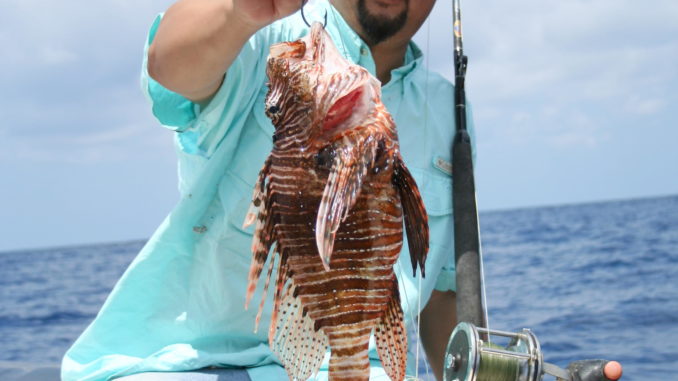
Native to the tropical Indo-Pacific region, lionfish are often kept in both public and private aquariums, but in the past few years have begun appearing in offshore bottomfish catches off the Palmetto Coast.
Since 2000, lionfish have been observed, primarily by scuba divers, in coral, rocky and artificial reefs along the Southeastern coast of the United States from Florida to North Carolina and also throughout the Bahamas, Bermuda and Cuba. For more information on the lionfish, along with a photograph, visit the DNR Web site at http://www.dnr.sc.gov/marine/lionfish.html.
In more recent years, lionfish have also been caught by bottom-fishing anglers. Scientists expect lionfish to continue to disperse throughout the Caribbean Sea, Gulf of Mexico and the Florida Keys. There is also increasing concern among fishery scientists that lionfish, having no natural enemies, may adversely impact natural fish populations.
Additionally, lionfish have venomous spines and may pose a danger to divers and anglers alike. The National Oceanic and Atmospheric Administration (NOAA) would like to encourage fishermen to be extremely cautious and avoid contact with the venomous spines of the lionfish and to help spread the word to other anglers.
If an angler does get “stung” by the venomous spines, (all the spines are venomous) they are advised to immerse the wound in hot water for 30 to 90 minutes and seek medical attention as soon as possible. Hook and line or fishing-related lionfish catches can be reported to NOAA by e-mailing to reportlionfish@noaa.gov or calling (252) 728-8714.
For additional information from NOAA on lionfish, visit http://coastalscience.noaa.gov/education/lionfish.html.



Be the first to comment